
Dance Forms in the Street /Ongoing
We acknowledge the support of the Canada Council for the Arts.

“Dance Forms in the Street” is an interactive art project that delves into street carnivals and festivals’ celebratory and healing origins. This project aims to immerse visitors in carnivals and street celebrations, showcasing their cultural significance through textiles, sound installations, and stop-motion animation. Inspired by various carnivals and celebrations in Colombia, the project highlights the connection between dance, music, and the collective joy experienced in these festivities.
This project was funded by the Canada Council for the Arts in the Research and Create component. It is still under development in its first phase. The images, videos, and sounds shown here are partial research results. The goal is to create an installation in a gallery space where the audience can enjoy this art experience.
Fabric Designs
Colombian carnivals and most celebrations in Latin America have a rich history rooted in tri-ethnic groups: Indigenous peoples, Afro-descendant peoples, and Spanish colonials. I approach these celebrations through costume. I created fabrics that tell stories about what I observed while touring them. Each fabric I design tells a story related to one of the ethnic roots that converge seamlessly in these celebrations.












Stop-motion Animation
During my time in the Design for Dance artistic residency at the Banff Centre for Arts and Creativity, I came across the book “Dancing in the Streets: A History of Collective Joy” by Barbara Ehrenreich, which inspired me to rethink the concept of celebration. In her research, she questions why collective ecstasy is rarely embraced and why we do not make more room for celebration, considering our tremendous capacity for collective ecstasy. This vision motivates me to explore collective celebration’s historical and contemporary impact on individual well-being and community functioning.
While researching the origin of celebrated carnivals in Colombia, I discovered a recurring theme amongst most of them. These celebrations have emerged as a means of protesting against established orders, highlighting historical and social injustices, or serving as a form of collective healing after traumatic events. As a result, these events have served as a space for the convergence of the three ethnic groups, fostering a friendly dialogue that facilitates healing.
An example is the Blacks and Whites Carnival, which originated as a celebration of enslaved people on January 5th, their only free day. The celebration blended with other indigenous and Christian celebrations, eventually giving birth to the Carnival we know today. Even today, people use the Carnival as a tool for denunciation.
Art direction: Juliana Silva
Through my animation, I aim to emphasize the need for healing spaces in society and how collective celebrations that involve music, dance, and costuming can help us liberate ourselves from emotional and social constraints.
Wall Hangings
Dance Forms in the Street, reactive inks printed on cotton sateen fabric, 2023
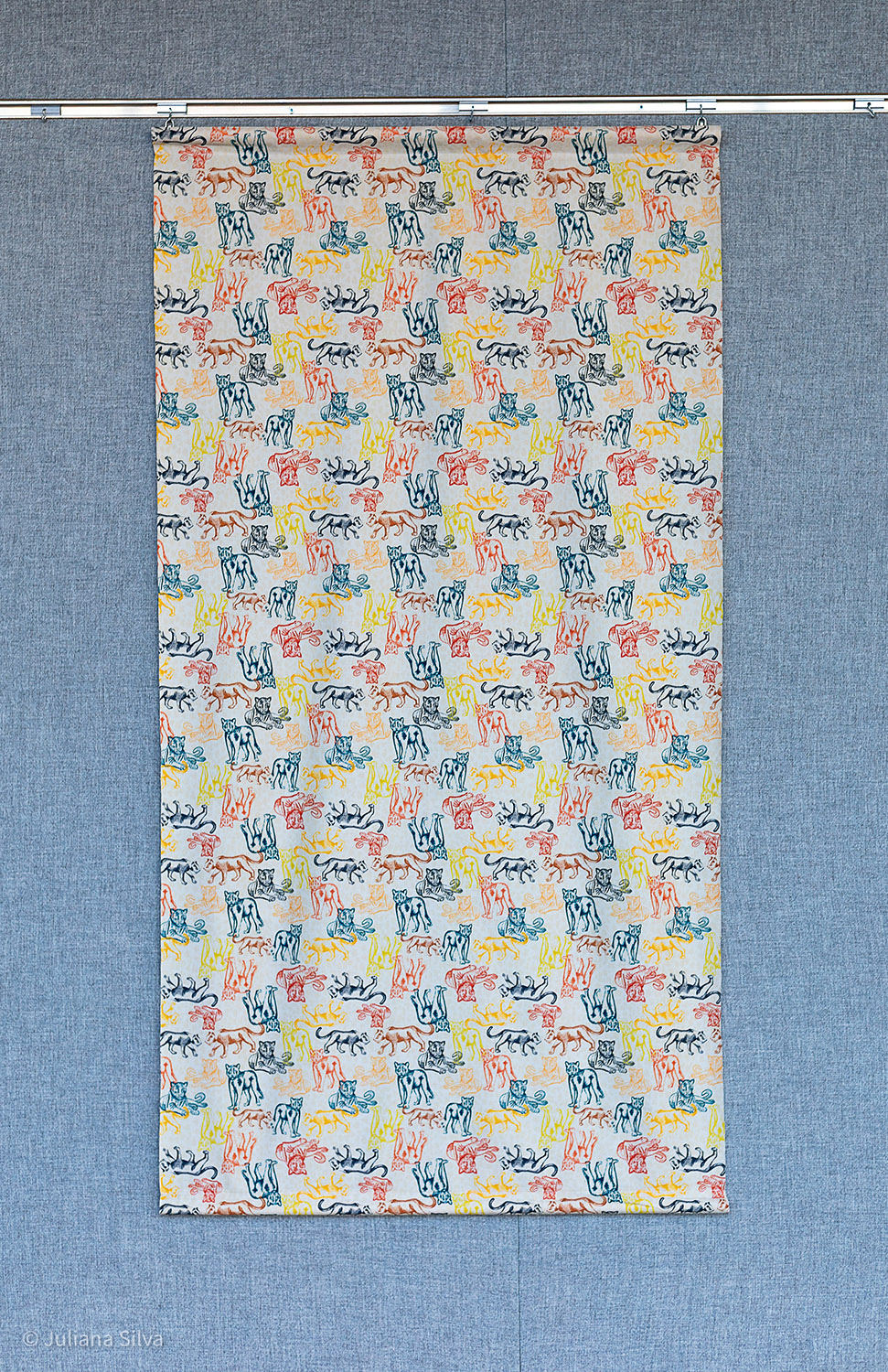
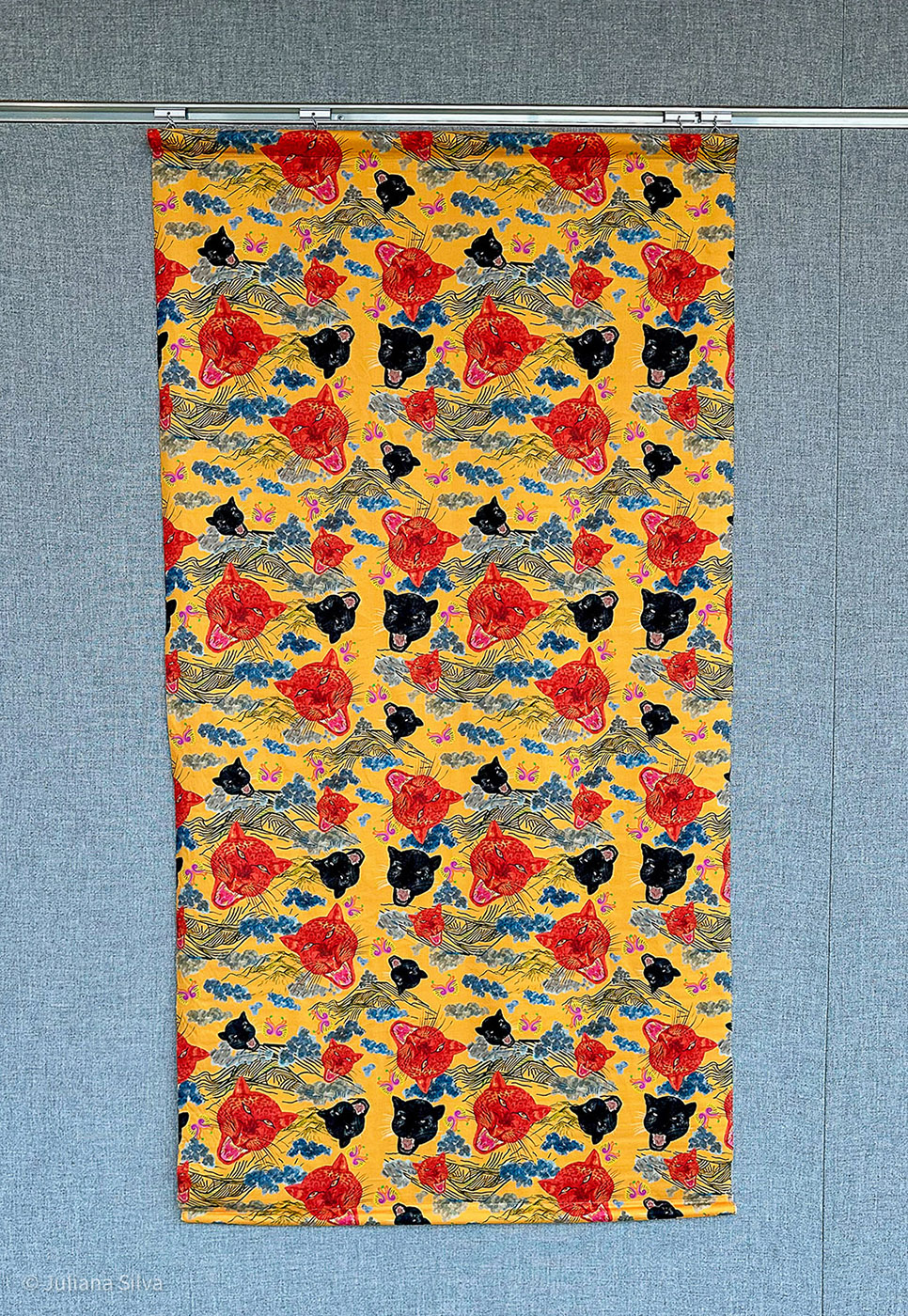
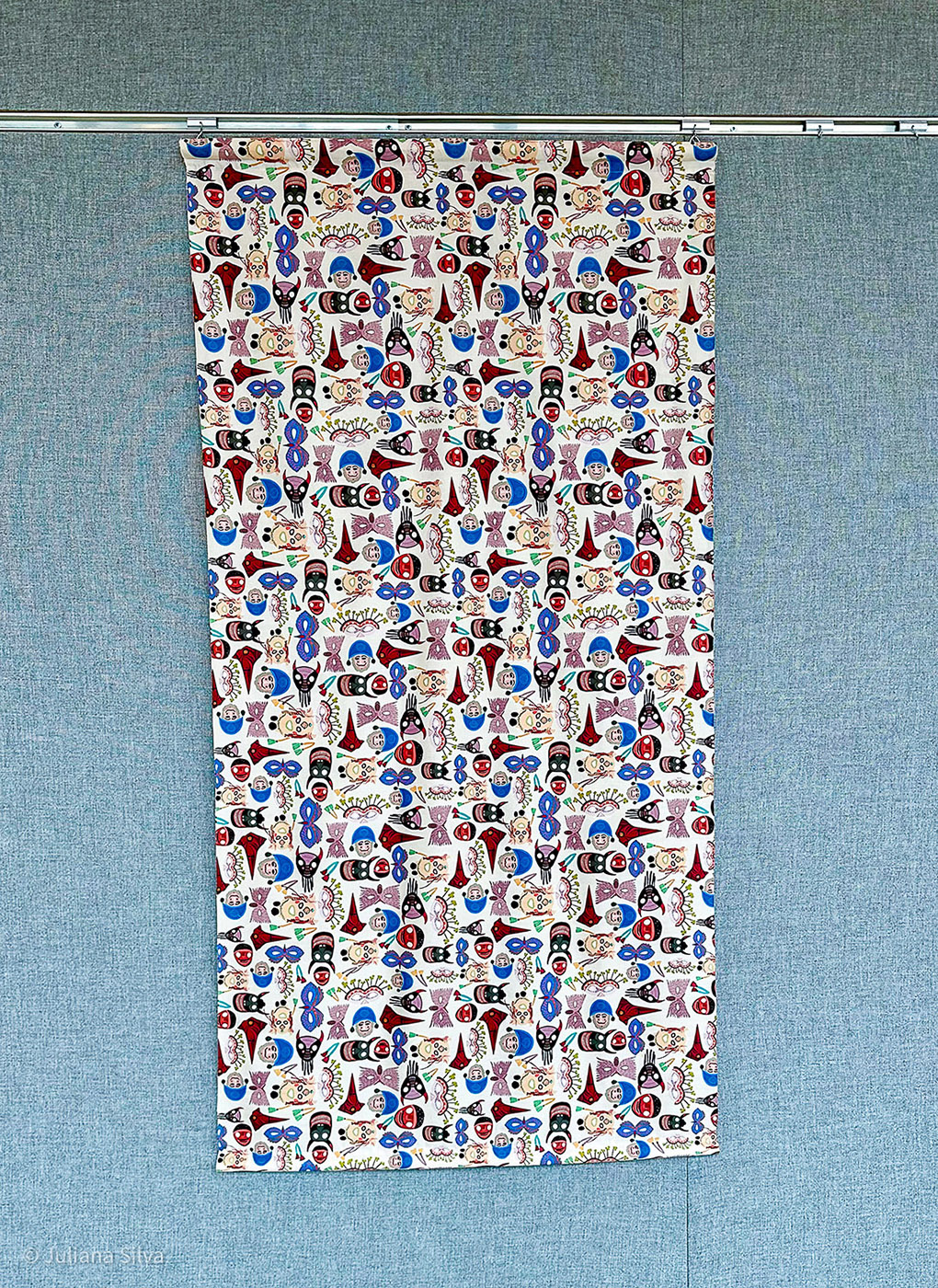


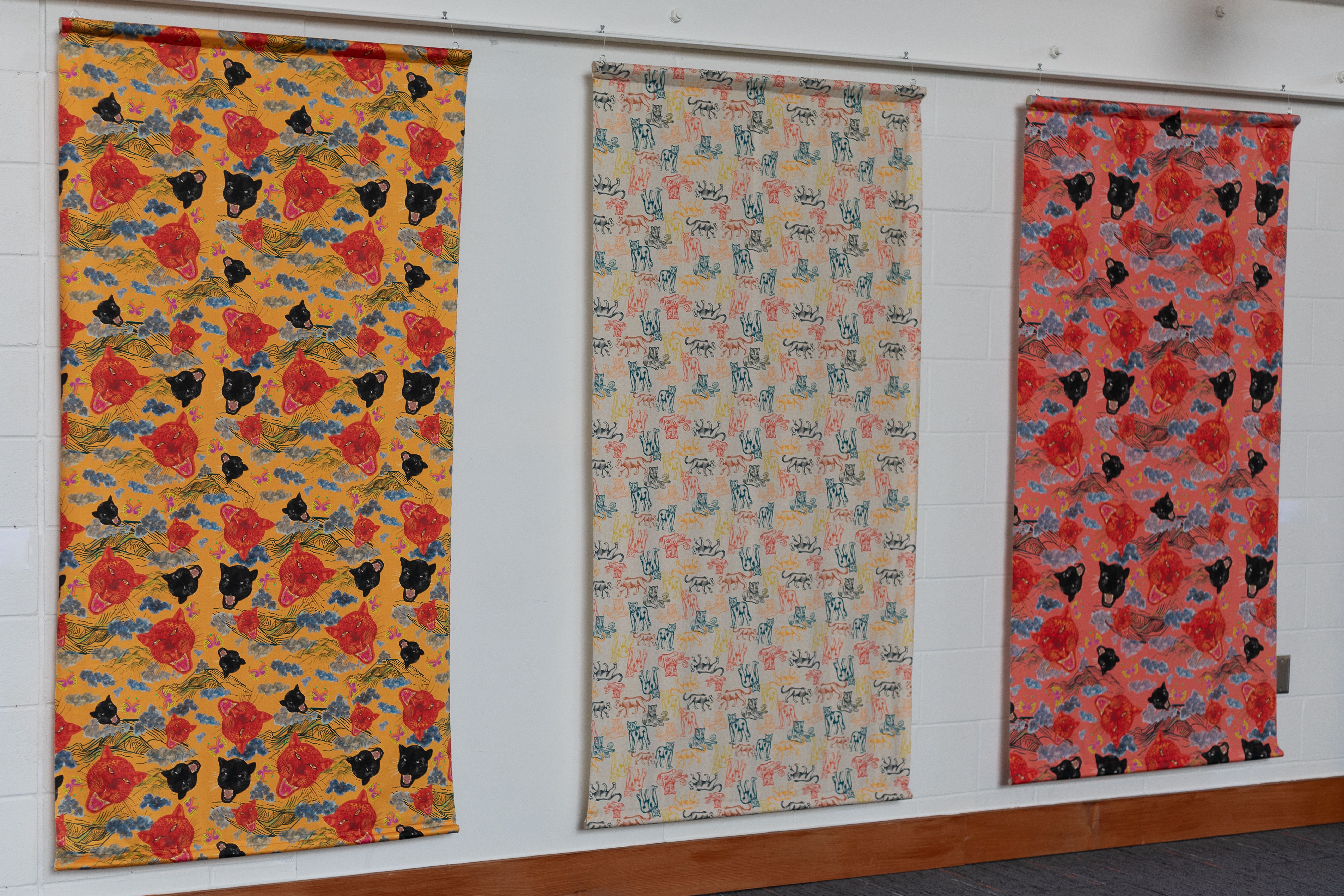
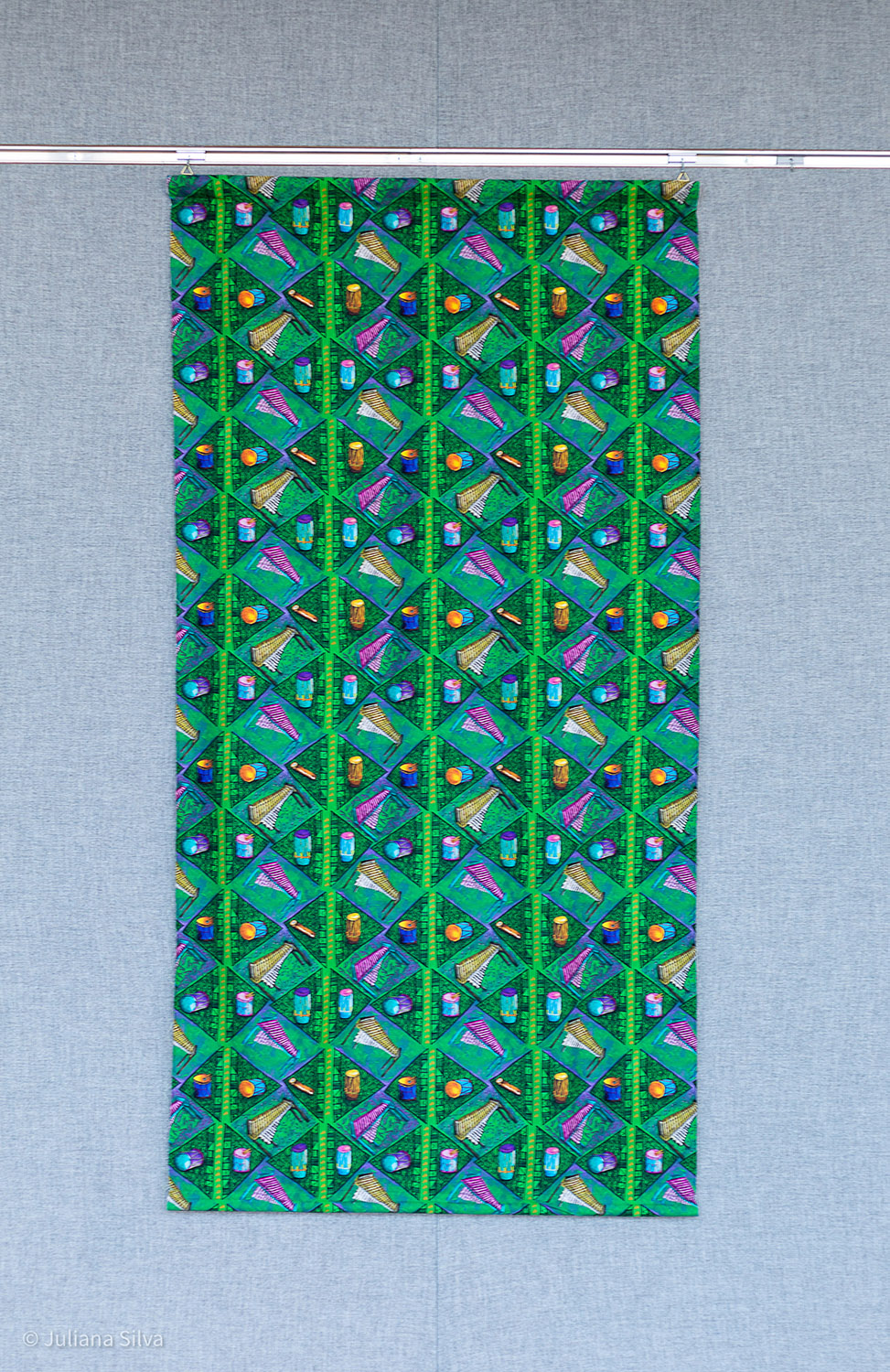
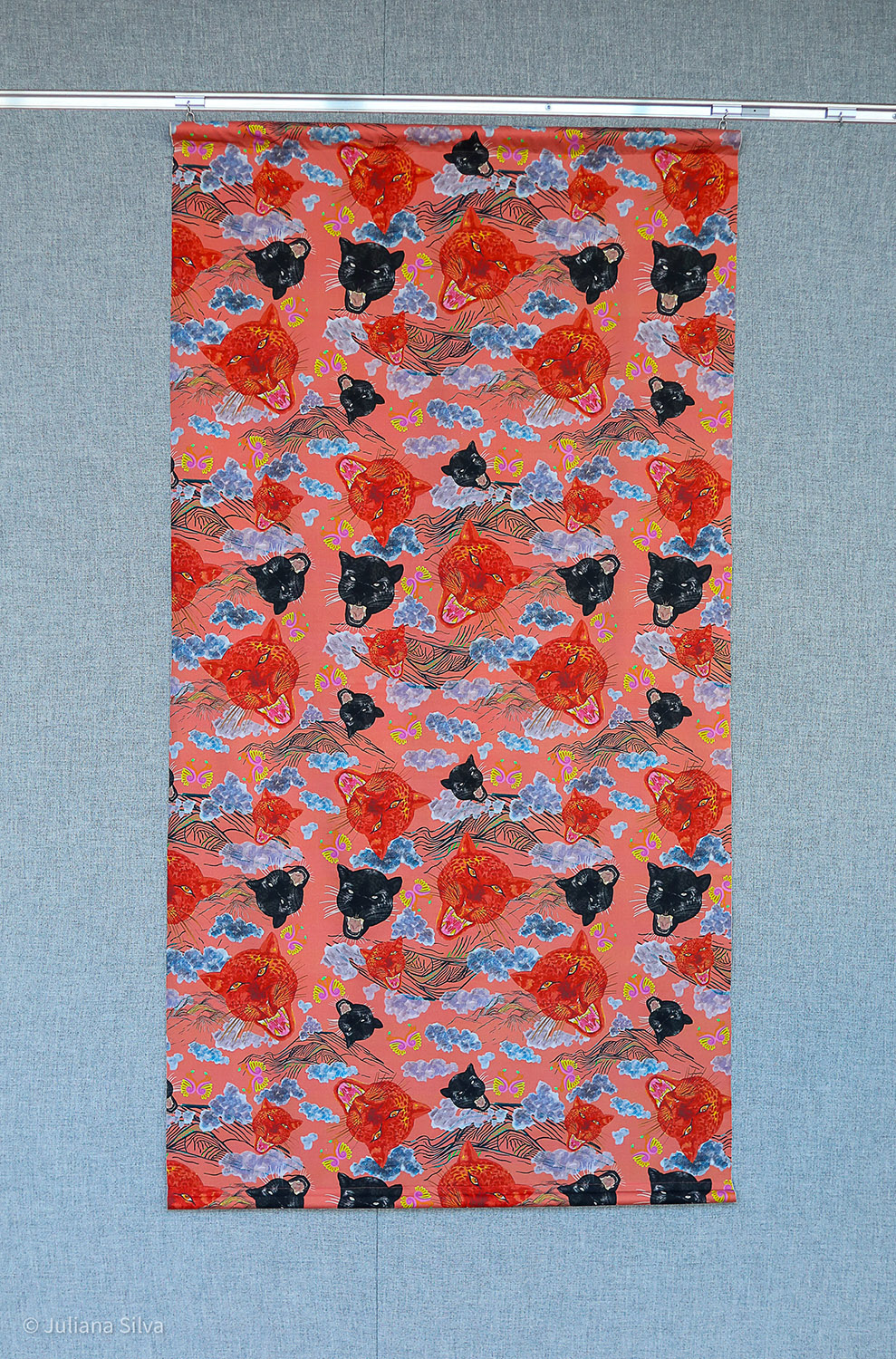
Collages Series
Synchrony. Collage (fabrics, threads, acrylic), 22″x26″, 2024.






Synchrony is a 22″ x 26″ mixed-media artwork depicting a joyful carnival scene with a group celebrating and dancing in sync. The backdrop features panther masks and represents the volcano’s roar from the city that inspired this lively carnival scene.
I was inspired to explore the impact of collective celebration on individual well-being after considering Barbara Ehrenreich’s question: Why do we not make more room for celebration, given our tremendous capacity for collective ecstasy?
While observing people’s behavior at carnivals, I noticed that dance and music were essential to the celebration, significantly impacting people’s joy. This led me to research dance’s biological and psychological impact, discovering that it is a fundamental and natural part of human expression, influencing our thinking and learning ability.
The Synchronicity Hypothesis suggests that when we dance in a group, our brain activity becomes synchronized, enhancing coordination within and between individuals. It also proposes that we are biologically driven to dance due to its intrinsic rewards and improved interpersonal coordination.
Sound Walks
During my trip to Colombia, I had the opportunity to record some sound walks. These soundscapes were specifically curated to be enjoyed while immersing oneself in the textile installation, which is still in process. As an illustration, here are a few samples from my visit to the Blacks and Whites Carnival and Cali Fair.
Comments are closed, but trackbacks and pingbacks are open.